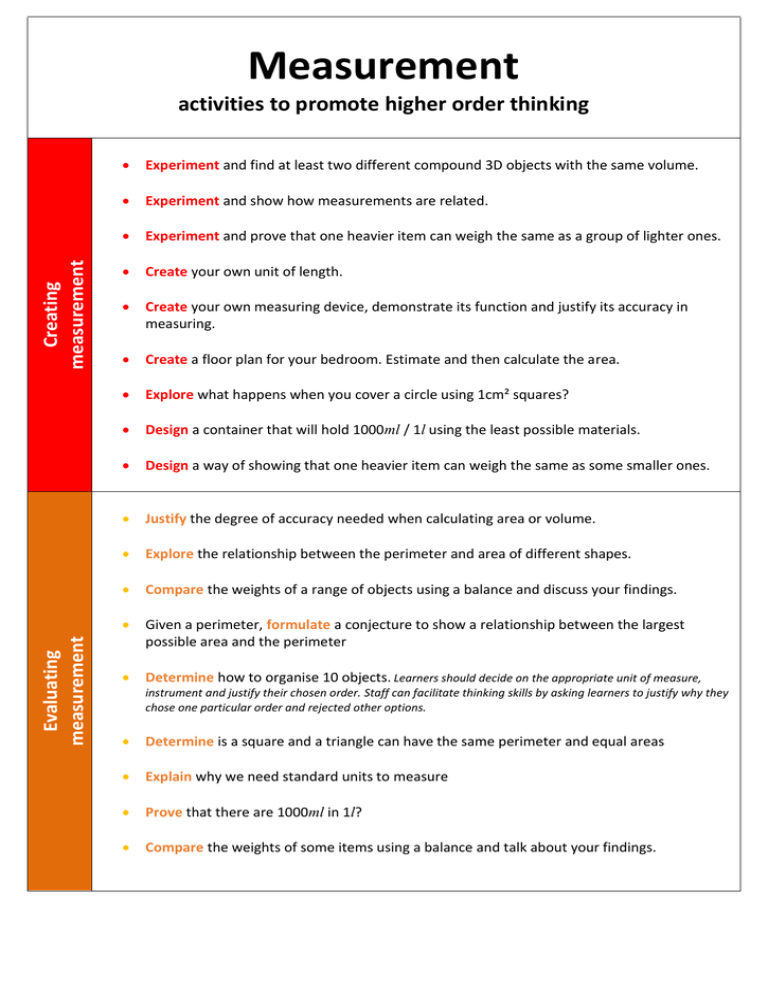Measurement activities to promote higher order thinking t
advertisement

Measurement Evaluating measurement Creating measurement activities to promote higher order thinking Experiment and find at least two different compound 3D objects with the same volume. Experiment and show how measurements are related. Experiment and prove that one heavier item can weigh the same as a group of lighter ones. Create your own unit of length. Create your own measuring device, demonstrate its function and justify its accuracy in measuring. Create a floor plan for your bedroom. Estimate and then calculate the area. Explore what happens when you cover a circle using 1cm² squares? Design a container that will hold 1000ml / 1l using the least possible materials. Design a way of showing that one heavier item can weigh the same as some smaller ones. Justify the degree of accuracy needed when calculating area or volume. Explore the relationship between the perimeter and area of different shapes. Compare the weights of a range of objects using a balance and discuss your findings. Given a perimeter, formulate a conjecture to show a relationship between the largest possible area and the perimeter Determine how to organise 10 objects. Learners should decide on the appropriate unit of measure, instrument and justify their chosen order. Staff can facilitate thinking skills by asking learners to justify why they chose one particular order and rejected other options. Determine is a square and a triangle can have the same perimeter and equal areas Explain why we need standard units to measure Prove that there are 1000ml in 1l? Compare the weights of some items using a balance and talk about your findings. Investigate how to find the volume of compound 3D objects. Investigate how to find the volume of cubes and cuboids using more than one method. Examine whether the smallest or biggest object is always the lightest or the heaviest. Explore and prove why the formula l x b x h only relates to cubes and cuboids and no other 3D object. Identify the weight / length / volume of 5 objects in whole kg/ m / l / cm² and tenths, hundredths of a kg/ m / l / cm2 in both fraction and decimal form. i.e. 5 kg / m / l / cm² and 5.75 kg / m / l / cm². Explore objects which are designed to be heavy or light estimate how heavy they are? Investigate whether the biggest items are always the heaviest. Show me how to find the perimeter and area of compound 2D shapes. Show me how to find the perimeter and area of squares, rectangles and triangles using more than one method. Use a balance to show which of two items is heavier. measurement Explain how you would choose which units of measurement to use. Explain how you would estimate the size of an object. Use scales and explain what happens when an object is put in it. measurement Tell me how to convert between units of measurement? Tell me which units of measurement can be used for length, weight and capacity? Tell me which object is heavier? Remembering Understanding measurement Applying Analysing measurement






